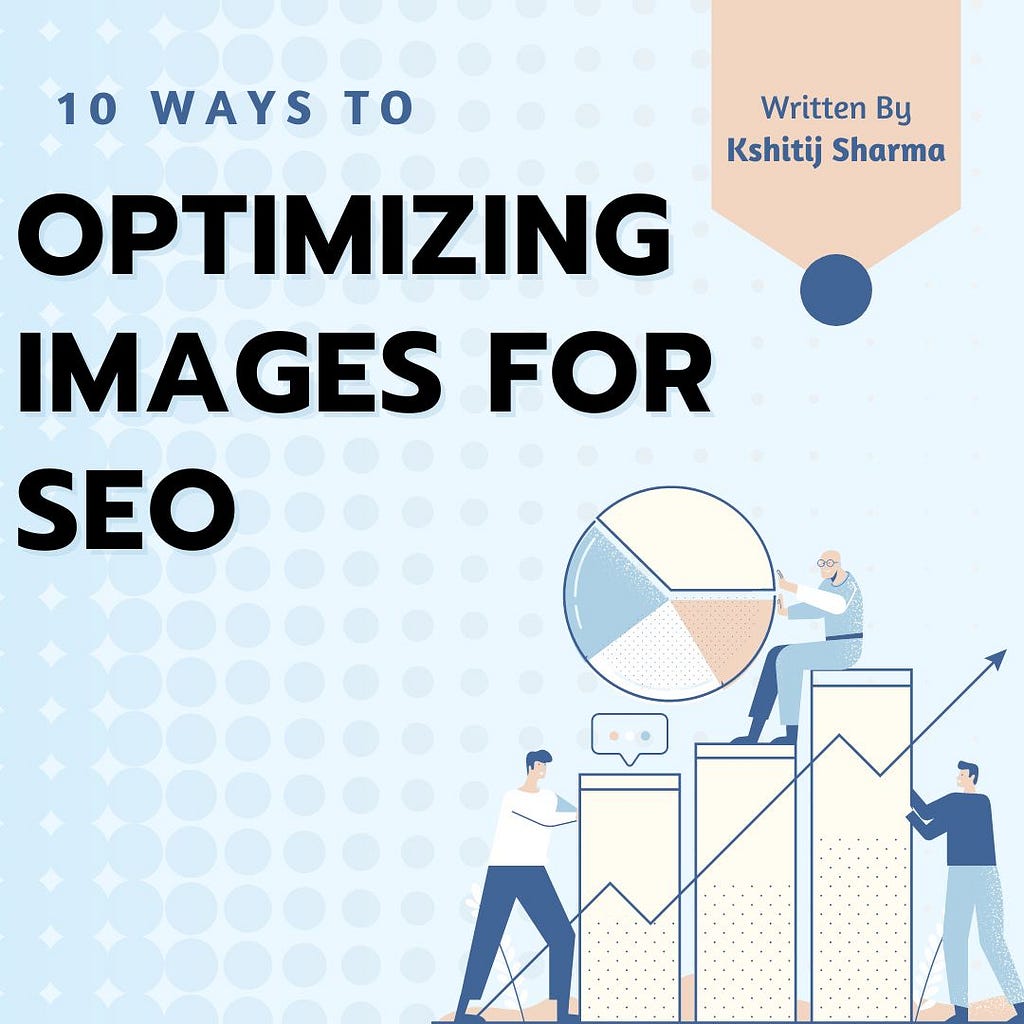
Optimizing Images for SEO: A Comprehensive Guide

1. Choose the Right Image
Relevance: Select images that are directly relevant to the content on the page.
- Example: If your blog post is about baking chocolate chip cookies, use images of chocolate chip cookies rather than unrelated food items.
Quality: Use high-quality images that are clear and visually appealing.
- Example: Compare a blurry photo of a cake to a professionally shot image; the latter will engage readers better.
Unique: Where possible, use unique images rather than stock photos to stand out.
- Example: Instead of using a common stock photo of a business meeting, take and use original photos of your own team.
2. Optimize File Names
Descriptive File Names: Use descriptive, keyword-rich file names.
- Example: Use “chocolate-chip-cookies-recipe.jpg” instead of “IMG1234.jpg”.
Hyphens Not Underscores: Use hyphens to separate words in the file name.
- Example: Use “baking-tips-for-beginners.jpg” instead of “baking_tips_for_beginners.jpg”.
3. Reduce File Size
Compression: Use tools like TinyPNG or JPEG Optimizer to compress images without losing quality.
- Example: Compress an image of a dessert from 2MB to 500KB while maintaining its visual quality.
Format: Choose the appropriate file format (JPEG for photographs, PNG for graphics with transparent backgrounds, SVG for scalable vector graphics).
- Example: Use JPEG for a photo of a sunset, PNG for a logo with a transparent background.
Responsive Images: Use responsive images (e.g., srcset) to serve different image sizes for different devices.
- Example: Serve a 400px wide image for mobile devices and an 800px wide image for desktops.
4. Use Alt Text
Descriptive Alt Text: Write descriptive alt text that includes relevant keywords but avoids keyword stuffing.
- Example: Use “A freshly baked batch of chocolate chip cookies on a cooling rack” instead of “cookies cookies cookies”.
Functional Alt Text: For images used as links, describe the link’s destination.
- Example: Use “Link to our cookie recipes collection” for an image that links to a recipe page.
5. Add Captions and Titles
Captions: Use captions where appropriate to provide additional context.
- Example: Add a caption “Homemade chocolate chip cookies” under the image of the cookies.
Title Attributes: Include title attributes for additional information, but ensure they add value beyond the alt text.
- Example: Use a title attribute like “Click to view our full chocolate chip cookie recipe” for an image that links to a recipe.
6. Structured Data and Image Sitemaps
Schema Markup
Schema Markup: Use structured data to help search engines understand the content of your images.
Example: Use JSON-LD to add schema markup for an image of a product, detailing the product name and price.
Apple iPhone 12
https://example.com/images/iphone12.jpg" alt="Apple iPhone 12">
The latest Apple iPhone 12 with 64GB storage.
Price: $699.00
Image Sitemaps
Image Sitemaps: Include images in your XML sitemap to help search engines discover and index them.
Example: Add tags in your XML sitemap with the image URLs and captions.
http://www.sitemaps.org/schemas/sitemap/0.9"
xmlns:image="http://www.google.com/schemas/sitemap-image/1.1">
https://example.com/products/iphone12
https://example.com/images/iphone12.jpg
Apple iPhone 12
Apple iPhone 12 - 64GB Storage
https://example.com/licenses/iphone12.jpg
https://example.com/products/galaxy-s21
https://example.com/images/galaxy-s21.jpg
Samsung Galaxy S21
Samsung Galaxy S21 - 128GB Storage
https://example.com/licenses/galaxy-s21.jpg
In these examples:
- Schema Markup: The JSON-LD script provides structured data about a product, including its name, image, description, SKU, brand, and offers.
- Image Sitemap: The XML sitemap includes tags with image URLs, captions, titles, and licenses to help search engines discover and index the images on your site.
By implementing these coding practices, you can improve the SEO for your images, making them more discoverable and better understood by search engines.
7. Contextual Relevance
Surrounding Text: Ensure the text surrounding the image is relevant and includes related keywords.
- Example: Place an image of a laptop next to a paragraph discussing the best laptops for students.
Placement: Place images near the most relevant content on the page.
- Example: Embed an image of ingredients next to the list of ingredients in a recipe post.
8. Mobile Optimization
Responsive Design: Ensure images are responsive and adjust to different screen sizes.
- Example: Use CSS to make images scale appropriately on both mobile phones and desktops.
Lazy Loading: Implement lazy loading to defer offscreen images until a user scrolls to them, improving page load times.
- Example: Use the loading="lazy" attribute in your image tags.
9. Technical SEO
CDN: Use a Content Delivery Network (CDN) to serve images quickly.
- Example: Use services like Cloudflare or Amazon CloudFront to deliver images faster to users around the world.
Caching: Implement browser caching for images to improve load times for returning visitors.
- Example: Configure your server to set cache headers so that images are cached by browsers.
Secure URLs: Use HTTPS for all images.
- Example: Ensure all image URLs start with “https://” to maintain security and SEO benefits.
10. Test and Monitor
Page Speed Insights: Use tools like Google PageSpeed Insights to test image performance and get recommendations.
- Example: Run a PageSpeed test and follow the recommendations to optimize image loading times.
Analytics: Monitor image performance in Google Analytics to see how images impact user engagement and SEO.
- Example: Track metrics such as page load times and user engagement to understand the impact of your image optimization efforts.
By following these strategies, you can optimize images to improve your website’s SEO, enhance user experience, and ensure faster load times.
